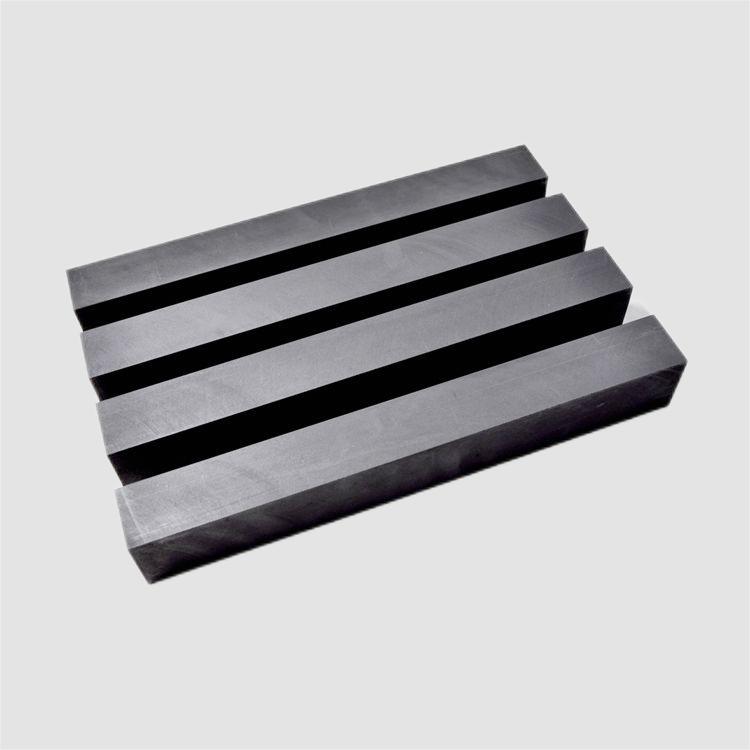
High purity graphite refers to graphite with a carbon content greater than 99.99%. High purity graphite has advantages such as high temperature resistance, corrosion resistance, thermal shock resistance, low thermal expansion coefficient, self-lubrication, low resistance coefficient, and easy mechanical processing. Conducting research on the production process of high-purity graphite and improving product quality is of profound significance for the development of China's high-purity graphite industry.
In order to promote the development of China's high-purity graphite industry, our company has invested a large amount of manpower and resources in the research and development of advanced high-purity graphite, making significant contributions to the localization of high-purity graphite. Now let me tell you about our company's research and development achievements:
- General process flow for producing high-purity graphite:
The main production process of high-purity graphite is shown in Figure 1. It is obvious that the production process of high-purity graphite is different from that of graphite electrodes. High purity graphite requires structurally isotropic raw materials, which need to be ground into finer powders. Isostatic pressing molding technology needs to be applied, and the roasting cycle is long. In order to achieve the desired density, multiple impregnation roasting cycles are required, and the graphitization cycle is much longer than ordinary graphite.
1.1 Raw materials
The raw materials for producing high-purity graphite include aggregates, binders, and impregnating agents. Aggregates are usually made of needle shaped petroleum coke and asphalt coke. This is because needle shaped petroleum coke has characteristics such as low ash content (generally less than 1%), easy graphitization at high temperatures, good conductivity and thermal conductivity, and low linear expansion coefficient; The graphite obtained by using asphalt coke at the same graphitization temperature has a higher electrical resistivity but higher mechanical strength. Therefore, when producing graphitized products, in addition to petroleum coke, a proportion of asphalt coke is also used to improve the mechanical strength of the product. Binders usually use coal tar pitch, which is a product of the distillation process of coal tar. It is a black solid at room temperature and has no fixed melting point.
1.2 Calcination/Purification
Calcination refers to the high-temperature heating treatment of various solid carbon raw materials under isolated air conditions. The selected aggregates contain varying degrees of moisture, impurities, or volatile substances in their internal structure due to differences in coking temperature or geological age of coal formation. These substances need to be eliminated in advance, otherwise it will affect product quality and performance. Therefore, the selected aggregates should be calcined or purified.
1.3 Grinding
The solid materials used for graphite production, although the block size is reduced after calcination or purification, still have a relatively large particle size with significant fluctuations and uneven composition. Therefore, it is necessary to crush the aggregate particle size to meet the ingredient requirements.
1.4 Mixing and kneading
The ground powder needs to be mixed with coal tar binder in proportion before being put into a heated kneading machine for kneading to ensure uniform distribution of the material.
1.5 Forming
The main methods include extrusion molding, molding, vibration molding, and isostatic pressing molding
1.6 Baking
The formed carbon products must undergo a roasting process, which involves carbonizing the binder into binder coke through heat treatment (approximately 1000 ℃) under isolated air conditions.
1.7 Impregnation
The purpose of impregnation is to fill the small pores formed inside the product during the roasting process with molten asphalt and other impregnating agents, as well as the existing open pores in the aggregate coke particles, to improve the volume density, conductivity, mechanical strength, and chemical corrosion resistance of the product.
1.8 Graphitization
Graphitization refers to the high-temperature heat treatment process that transforms thermodynamically unstable non graphite carbon into graphite carbon through thermal activation.
Welcome to visit and inspect our factory, mainly engaged in graphite molds, high-purity graphite, graphite crucibles, nano graphite powder, isostatic pressing graphite, graphite electrodes, graphite rods, and so on.
Post time: Oct-03-2023
